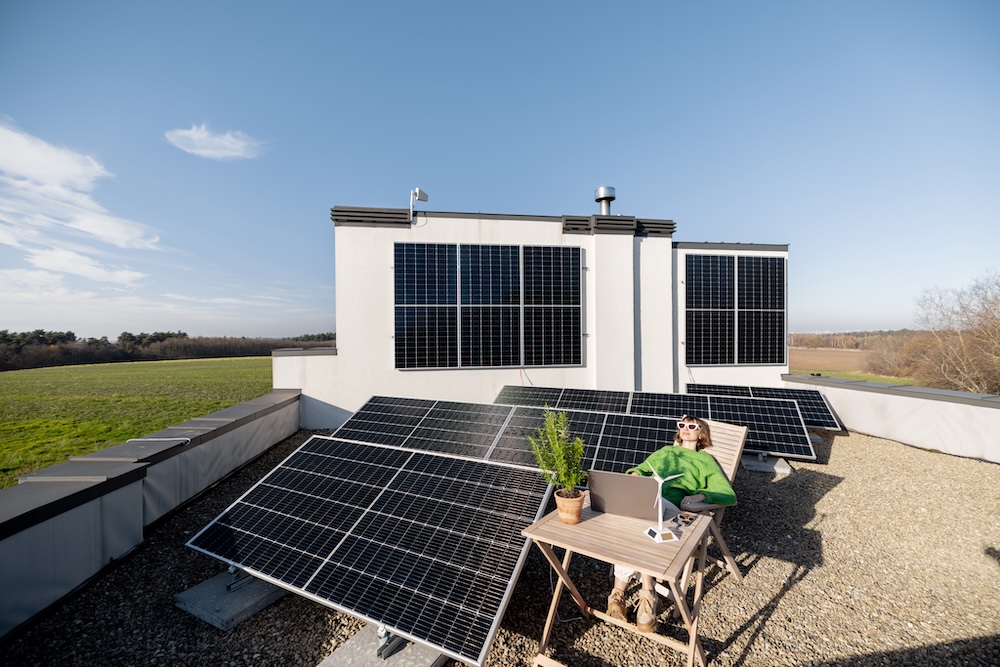Living off the grid is no longer just a survivalist dream or a remote cabin fantasy. More people are choosing off-grid solar power to gain energy independence, lower their carbon footprint, and simplify their lifestyle. But going off-grid comes with serious considerations—from cost and complexity to storage and maintenance.
This guide covers everything you need to know about off-grid solar systems: how they work, how much they cost, how long they last, and who they’re best for. Whether you’re building a remote homestead or just dreaming of disconnecting from utility dependence, here’s how to do it the smart, sustainable way.
What Is Off-Grid Solar?
Off-grid solar systems operate completely independently of utility power. Instead of feeding energy into the grid, these systems generate, store, and use electricity on-site through a combination of:
- Solar panels
- Charge controller
- Battery storage
- Inverter (to convert DC to AC for household use)
- Optional backup generator
The key difference is energy storage. Because you’re not connected to the grid, batteries are essential for powering your home at night or during cloudy weather.
Benefits of Off-Grid Solar Systems
Energy Independence
You produce and store your own power—no utility bills, no outages, no rate hikes.
Savings: $1,200–$2,500/year (based on average electric bills)
Long-Term ROI: Payback in 10–15 years with proper maintenance
Environmental Impact
An off-grid solar setup reduces or eliminates fossil fuel use.
Carbon Offset: Up to 3–4 tons of CO₂ per year, depending on system size
Bonus: Encourages energy mindfulness and efficient living
Ideal for Remote or Rural Properties
For homes far from power lines, off-grid solar is often more affordable than running utility service.
Grid Connection Cost: Up to $30,000+ in remote areas
Off-Grid System Cost: $15,000–$35,000 (turnkey installation)
Key Components and What They Do
Solar Panels
These capture sunlight and generate DC electricity.
- Lifespan: 25–30 years
- Efficiency: 18–22% typical
- Cost: ~$2.50 per watt (installed)
Charge Controller
Regulates the flow of electricity from panels to batteries, preventing overcharging.
- Cost: $100–$600
- Lifespan: 10–15 years
Battery Storage
Stores excess energy for use at night or during cloudy days.
- Types: Lithium-ion, AGM, lead-acid
- Capacity: Measured in kWh; average home needs 10–20 kWh/day
- Cost: $5,000–$15,000
- Lifespan: 5–15 years
Inverter
Converts stored DC energy into AC power used by home appliances.
- Cost: $1,000–$3,000
- Lifespan: 10–15 years
Backup Generator (Optional)
Used during extended cloudy periods or high-demand usage.
- Cost: $500–$5,000
- Fuel Types: Gasoline, propane, or diesel
How Much Does an Off-Grid Solar System Cost?
| Home Size | System Size | Est. Cost (USD) |
|---|---|---|
| Tiny home/cabin | 1–2 kW | $8,000–$15,000 |
| Small home | 3–5 kW | $15,000–$25,000 |
| Full-size home | 6–10 kW | $25,000–$45,000 |
These costs include panels, batteries, inverter, labor, and installation.
Who Is Off-Grid Solar Best For?
- Homesteaders and cabin owners seeking full independence
- Remote properties without access to power lines
- Eco-conscious households with low energy needs
- Emergency-preparedness enthusiasts building resilience
- DIYers and tinkerers comfortable maintaining their systems
Pros and Cons Summary
Pros:
- No utility bills or rate hikes
- Sustainable and low-carbon
- Independent and resilient
- Great for remote areas
Cons:
- Higher upfront cost
- Battery replacement every 5–15 years
- Limited energy availability—requires mindful usage
- Requires maintenance and technical know-how
Maintenance and Monitoring Tips
- Check battery health and levels monthly
- Clean panels seasonally or after heavy debris
- Use energy monitoring apps or displays to track usage
- Replace components as needed (especially batteries and inverters)
Smart maintenance ensures long-term efficiency and safety.
Common Questions About Off-Grid Solar
Do off-grid systems work in cloudy weather?
Yes—but you’ll need sufficient battery storage to carry you through low-light days.
Can I run a full-size home off-grid?
Yes, but you’ll need a larger system and possibly a backup generator for peak times.
Is off-grid cheaper than staying on-grid?
In remote areas, yes. In urban areas, grid-tied with battery backup may be more cost-effective.
How long do batteries last?
Lithium-ion: 10–15 years. AGM/lead-acid: 5–10 years. Longevity depends on depth of discharge and maintenance.
Can I DIY my off-grid system?
Many components are DIY-friendly, but professional installation is recommended for large or critical setups.
Final Thoughts: Freedom with Responsibility
Off-grid solar is the ultimate expression of sustainable, intentional living. It offers true independence—from the power company and the volatility of fossil fuels. But with that freedom comes responsibility. You’ll need to manage your usage, maintain your system, and think carefully about energy priorities.
For those ready to make the leap, off-grid solar delivers unmatched rewards: peace, autonomy, and a deeper connection to the rhythms of nature.









Reader Interactions